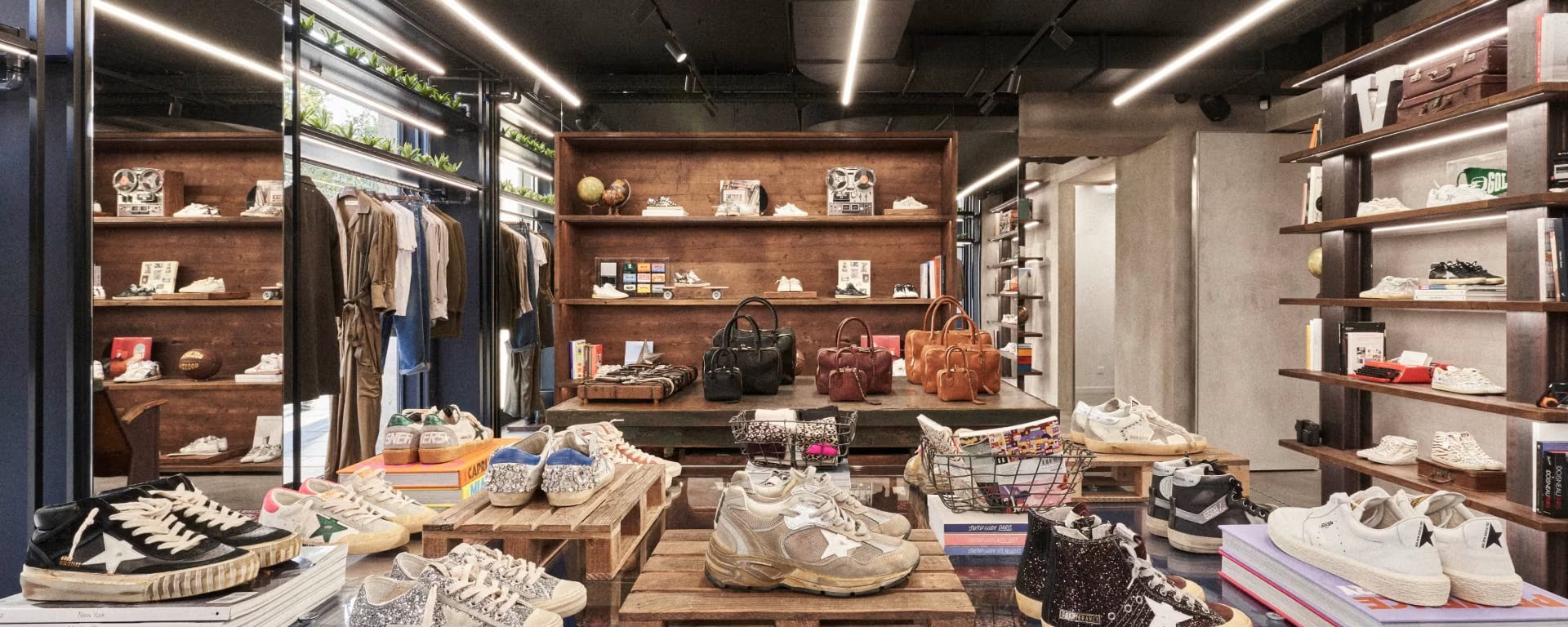The Milanese Footwear Brand Continues Its Innovative Approach to Global Expansion
Golden Goose has reported a 12 percent revenue increase, totaling 466 million euros, for the period until September 30, when compared to the same timeframe last year.
In his communication to stakeholders, CEO Silvio Campara emphasized Golden Goose’s unique positioning in the market and the importance of co-creation with consumers for supporting the scaling growth. The CEO also underscored the brand’s inclusive and diverse appeal to consumers in various cities, explaining, “Europe, for example, has a touristic vocation, and in terms of culture, food, museums, it’s a leader. Products are bought here as souvenirs… This localization rewards us, we have global silhouettes but different constructions everywhere and let’s not forget the co-creation factor.”
Highlighting the brand’s initiative to promote buyer creativity, Campara asserted that Golden Goose aims to maintain the growth momentum by transitioning from traditional marketing to an emphasis on customer experience. He sounded positive about the brand’s future, firmly stating, “I am confident that this will carry us from strength to strength in the future.”
The company reported an 18 percent increase in direct-to-consumer sales for the nine months, reaching 346.1 million euros. Golden Goose said the growth hike originated from a 37 percent gain in the Europe, Middle East, and Africa region, a 14 percent jump in the Americas, and new openings combined with positive like-for-like performance. Campara revealed that the year ahead would see additional store openings in Mumbai and Bangalore, which will be directly operated.
Moving forward, Golden Goose maintains a keen focus on quality control efforts through co-creation opportunities, according to Campara. The company is steadfast in providing superior customer experiences even as the wholesale channel dipped 4 percent to 110.4 million euros, contributing to 24 percent of the total income as a result of this strategy.
The brand is also engaging with local communities via creative spaces such as the Haus in Mexico City and the Haus of Dreamers in Marghera, Venice- a facility created to celebrate product, arts, and craftsmanship. The company is striving to foster the new generation of artisans through their innovative Academy, confirmed, Campara.
Campara outlined ambitions to tap into markets outside the traditional luxury brand radar and target demographics in regions like Mexico, Brazil, India, and South East Asia. The CEO noted an influx of Gen Z customers, which he views as key to the brand’s future growth.
The company’s strategic Younique hybrid format, which combines a café with a retail store, has already seen launches in places like Bangkok, Seoul, and cities in China. Campara spoke about the brand’s expansion in the Asia Pacific region, mentioning China as a place with tremendous business potential and growth.
As for the pending IPO, which was expected to take place in June and was delayed, Campara commented, “the process never finished for us, we continue to create value aligned with our investors, and when there will be the right market conditions, it will be an option that we will consider.” CEO Campara reassured investment stakeholders stressing that the IPO delay was due to “European market volatility,” and not related to the market’s response.
Golden Goose, known most famously for its successful Superstar sneakers and intentionally distressed styles, was established in 2000. The company has also successfully grown its apparel and accessories business. In 2020, former Chanel global CEO Maureen Chiquet was named chair of the company, and this year Golden Goose invited former Gucci president and CEO Marco Bizzarri onto its board of directors to fuel its continued growth in the luxury market.
